Enlaces de interés
Research

We are a multidisciplinary team of scientists who investigate how mechanical forces determine muscle function at the molecular, cellular, tissue and organismal levels. Our motivation is to improve the understanding, diagnosis and treatment of cardiovascular and musculoskeletal diseases. At the same time, we train scientists, awake vocations in science and contribute to strengthen and disseminate the scientific culture.
In the “Know more” page you will find more information about our current projects. Click on the “Interesting info” and “Downloads” sections for interesting links and files of the methods we use, lectures, seminars and talks. For updates and news, follow Jorge in twitter @AlegreCebollada.
 | News:
|
Collaborators
- Andrés Hidalgo lab (Imaging the Cardiovascular Inflammation and the Immune Response, CNIC)
- Kristina Djinovic-Carugo lab (Structural Biology of the Cytoskeleton, University of Vienna, Austria)
- J. Vázquez’s lab (Proteomics, CNIC)
- P. García (Familial Cardiomyopathies, Hospital Puerta de Hierro)
- Health in Code (Company specialized in Cardiovascular Genetics, A Coruña)
- M.A. del Pozo’s lab (Mechanoadaptation and Caveolae Biology, CNIC)
- R. Pérez-Jiménez’s lab (Nanogune)
- Matthias Wilmanns’ lab (Molecular machinery for protein translocation across membranes and mechanisms of molecular elasticity, EMBL Hamburg, Germany).
- Wolfgang Linke’s lab (Cardiovascular Physiology, WWU Münster, Germany).
- Ricardo García’s lab (Nanomechanics and Force Spectroscopy, ICMM-CSIC, Madrid).
- Gustavo Plaza (Materials Science Department, Universidad Politécnica de Madrid).
- Miquel Adrover (Effects of posttranslational modifications on protein structure and function, UIB, Mallorca, Spain).
In addition to our collaborators, scientific life at the lab is possible thanks to many people including colleagues and mentors at CNIC (M. Torres, J.M. Redondo, M.A. del Pozo...) and outside CNIC (J.M. Fernández, Á. Martínez-del-Pozo, J.G. Gavilanes, W.A. Linke...), and also to funding agencies (Ministry of Economy and Competitiveness, Fundacion Pro-CNIC, Marie Sklodowska-Curie actions, Regional Government of Madrid, European Research Council). We are thankful for the outstanding lab management by A, Ciprés, administrative assistance by A. Gutiérrez, and administrative support from all departments at CNIC (Scientific Management, HR, finance, purchasing...). We also thank all feedback received from reviewers and from colleagues at meetings and seminars.
Multimedia
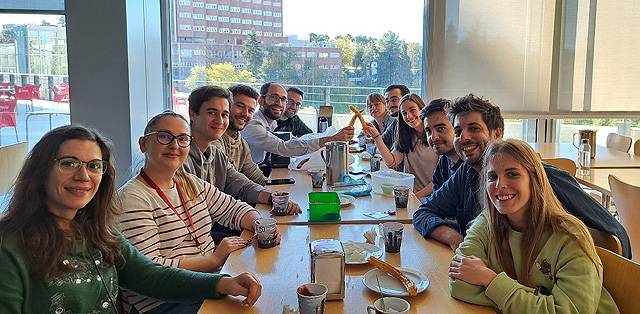
November 2023. Celebrating a la madrileña, with chocolate, churros
and porras, the group''s latest publication in Cell Reports.
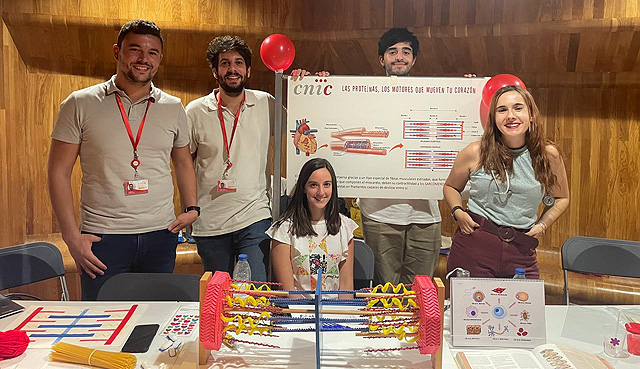
September 2023. Explaining cardiac muscle function at La Noche de los Investigadores.
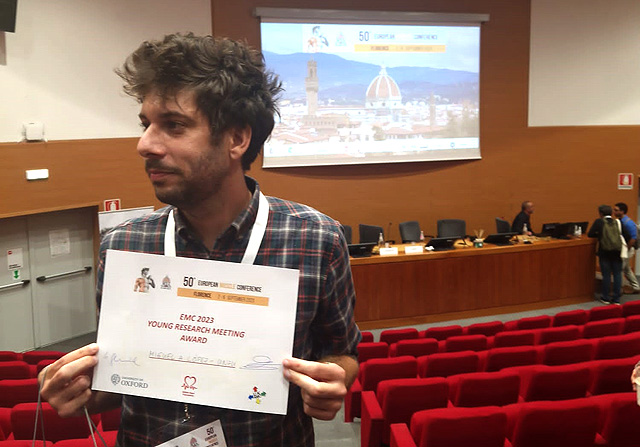
September 2023. Miguel receives the best Young Researcher Talk
Award at the European Muscle Conference held in Florence.
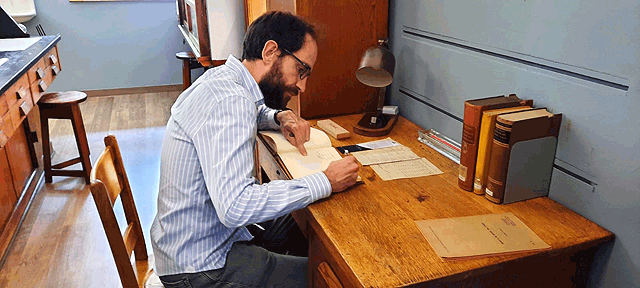
May 2023. Jorge signing in the guest book of Instituto de Química Física Blas Cabrera.
Marie Curie, Bragg, Langevin among others had contributed before to the very same guest book!
Jorge wes the first invited speaker following the renaming of the institute.
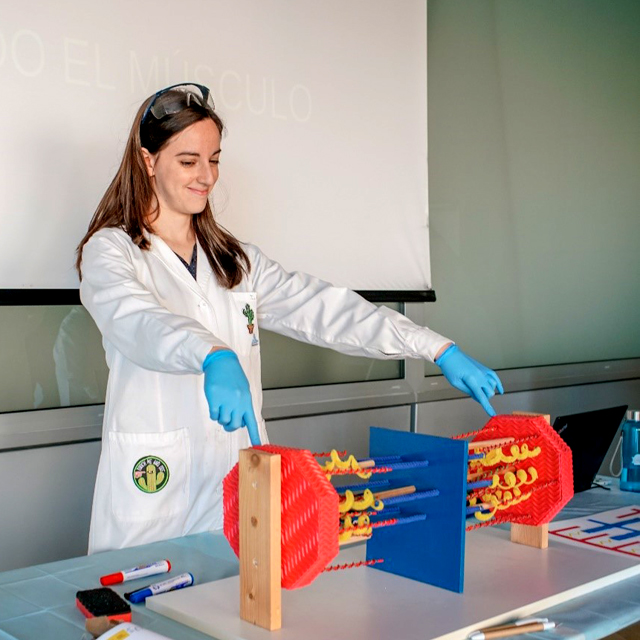
November 2022. Spreading the word of Science among schoolchildren during Semana de la Ciencia.
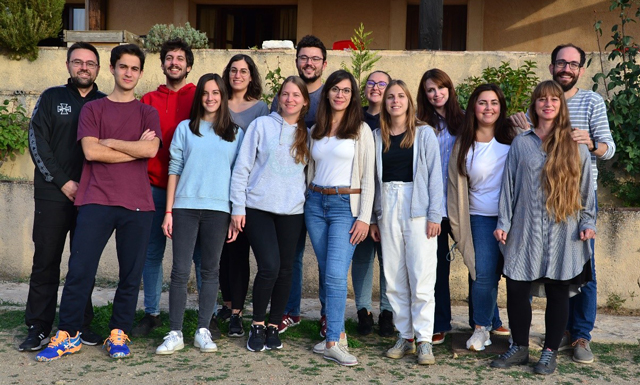
October 2022. Lab retreat in Gallegos (Segovia).
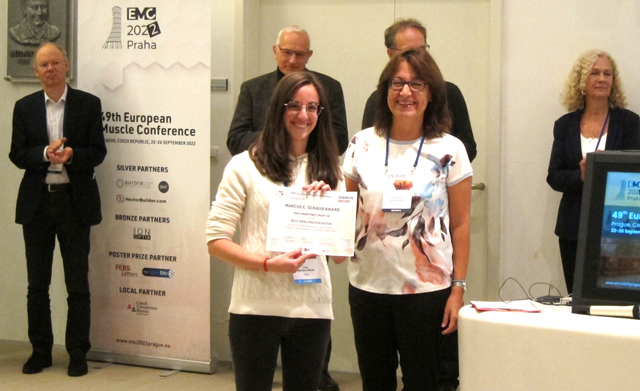
September 2022. Inés receives the Best Oral Presentation Award at the 49th European Muscle Conference in Prague.
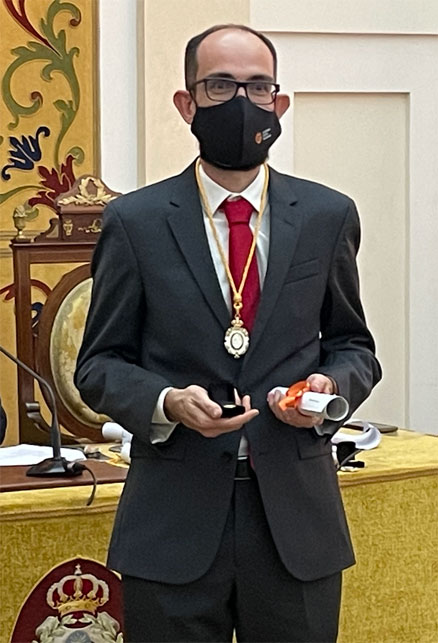
November 2021. Jorge is appointed to the Spanish Young Academy.
Link to the video of the ceremony.
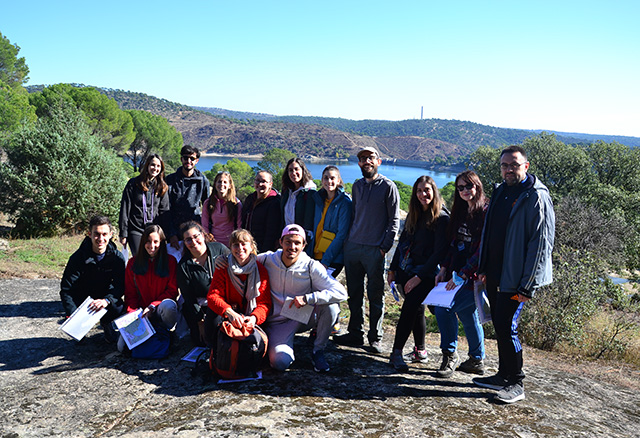
October 2021. A very much deserved lab celebration outing!
Now we know how to use a map and a compass.
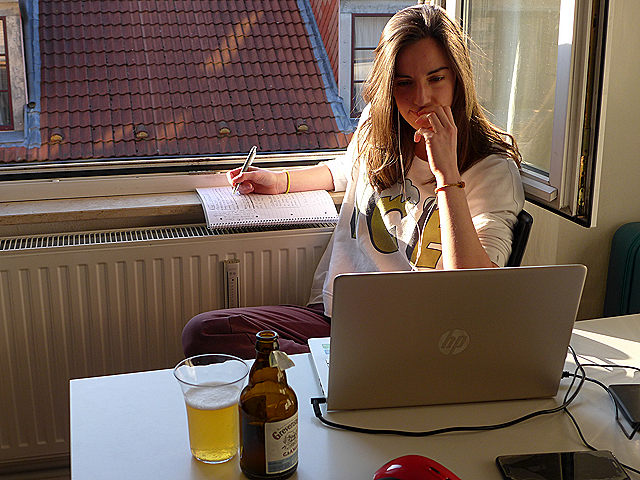
April 2020. Productive confinement of Inés in Hamburg, Germany.
Tele-work at its best! (Photo by Ulrike Schaz)
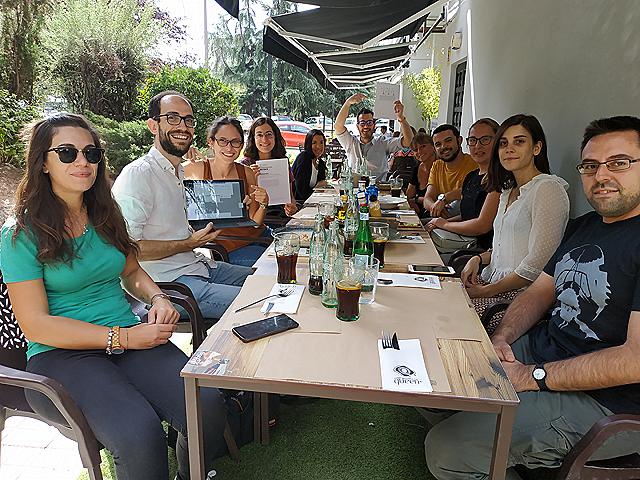
October 2019. A long overdue celebration of Carol and Carmen''s paper!
The Monte-Carlo procedure was also invited.
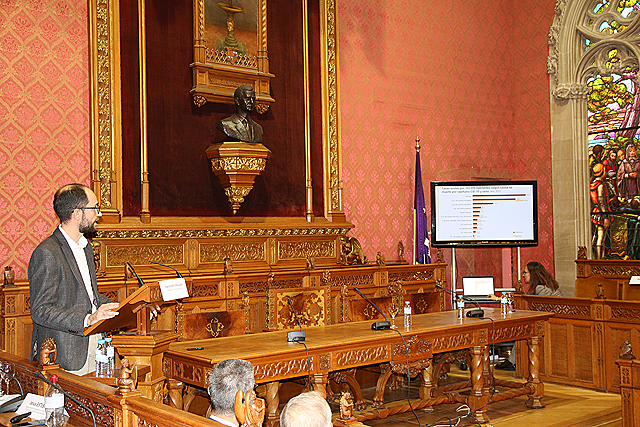
November 2019. Celebrating the Day of Chemistry in beautiful Palma de Mallorca.
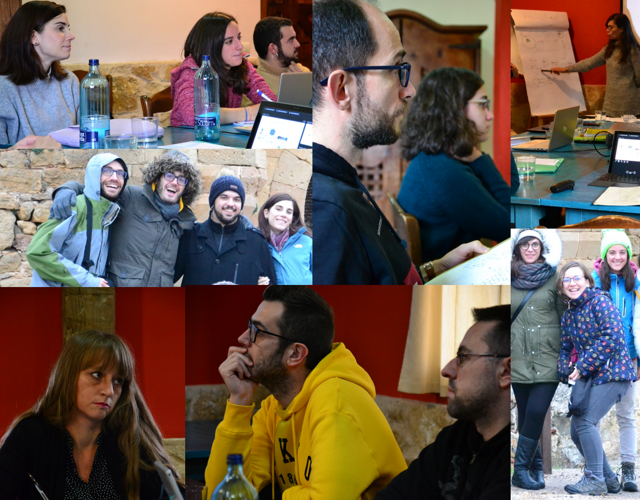
November 2019. Gallegos (Segovia), near Guadarrama National Park.
Keeping up with good traditions: science, fresh air (real fresh this time) and fun.
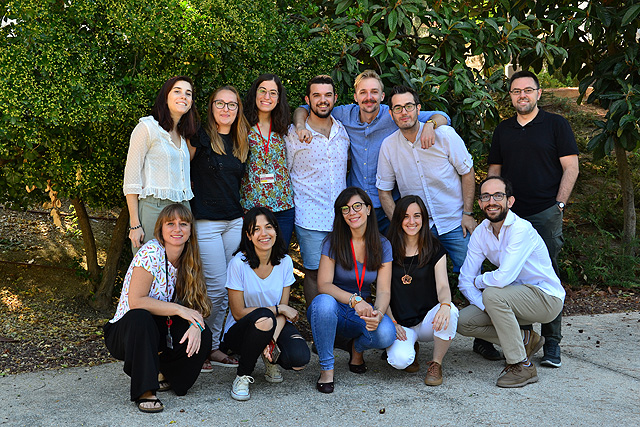
July 2019. Summer 2019 photo group at CNIC’s campus.
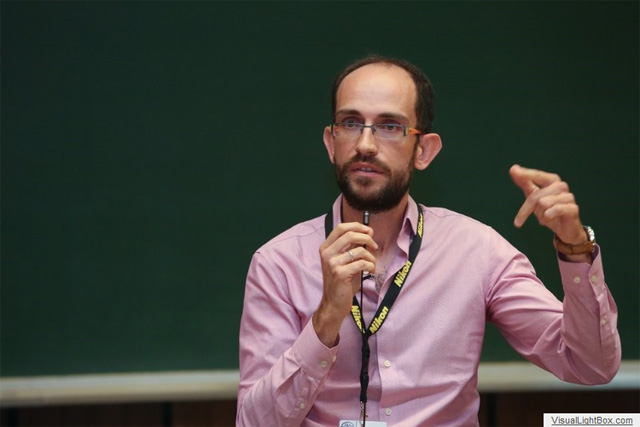
September 2018. Talking about how to functionally classify genetic variants associated
with hypertrophic cardiomyopathy at the EMC2018 Meeting in Budapest.
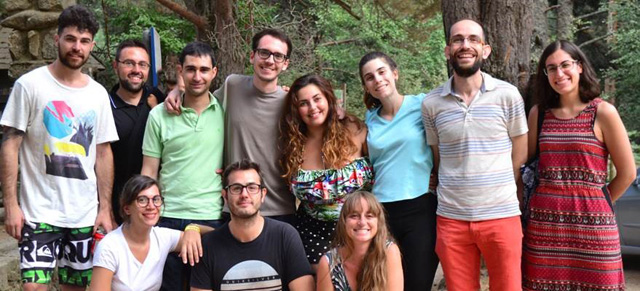
August 2018. Summer day trip to our beloved natural swimming pools at Cercedilla with cicerone students.
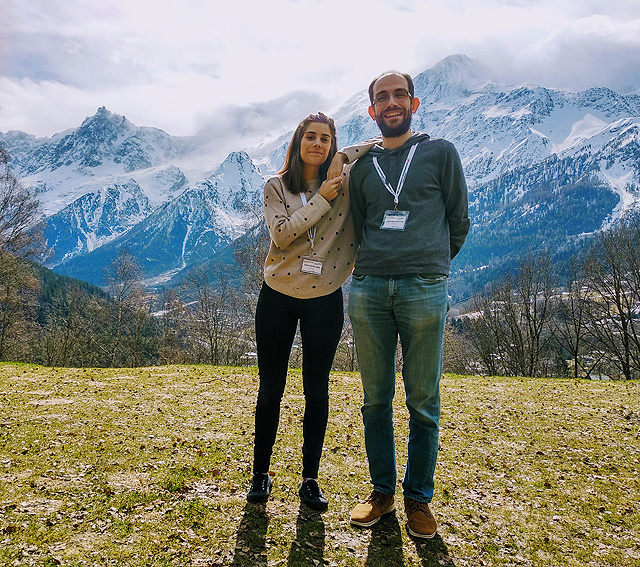
April 2018. Alpine Science: Enjoying the Mechanobiology of Polarized Cells Summer School organized by ITN-BIOPOL.
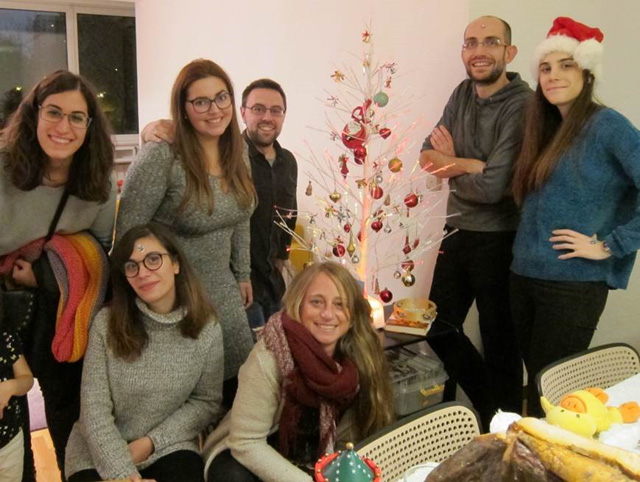
December 2017. Celebrating winter break at Jorge’s place.

November 2017. Carla and Natalia explaining how photosynthesis
works to young kids at Madrid’s Science week.
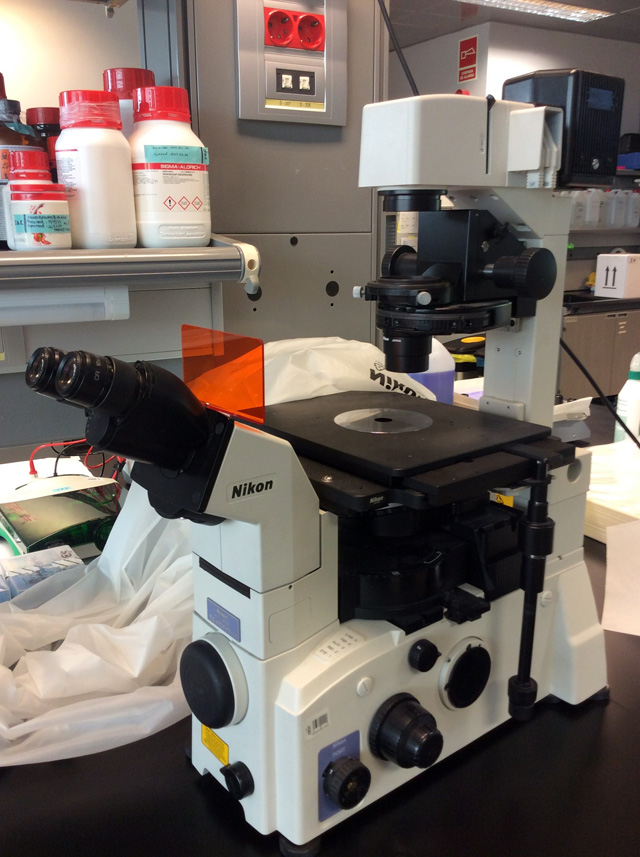
October 2017. Getting ready for assembling a single-molecule
magnetic tweezers setup to pull proteins at low forces.

May 2017. Inquisitive polpette. Who is who?
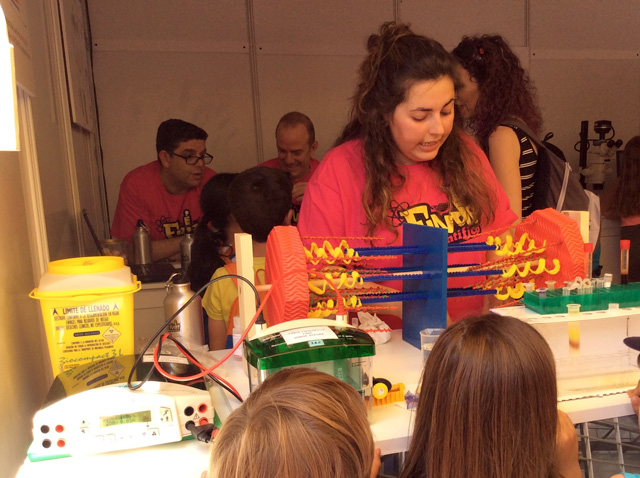
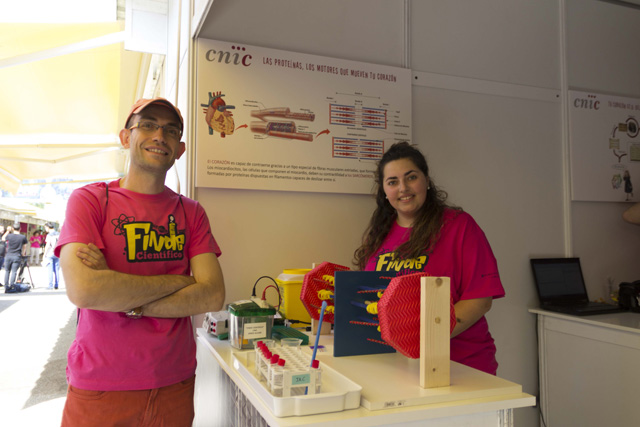
May 2017. We participate in the science fair organized by FECYT.
Take a second to admire our handcrafted sarcomere designed by Natalia. Titin is definitely a molecular spring!
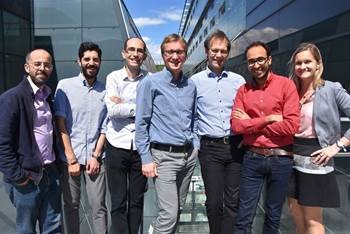
May 2017. Group photo from the kick off meeting of our ERA-CVD coordinated project Minotaur in Graz, Austria.
We’re working hard to find effective therapies for heart failure.
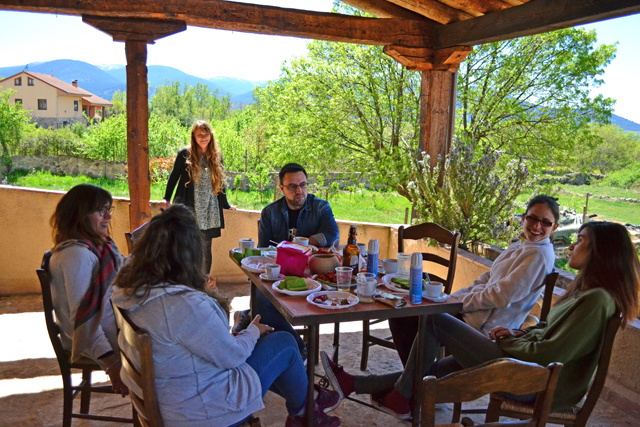
April 2017. Gallegos (Segovia), near Guadarrama National Park.
A good combination of science, food and fresh air!
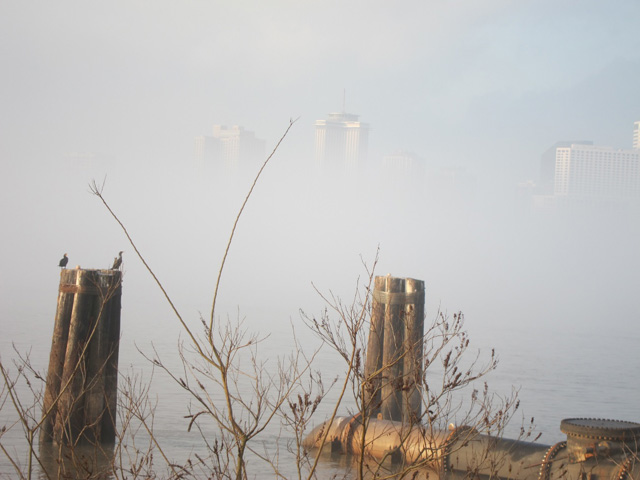
February 2017. A great experience at the Biophysical Society Meeting (New Orleans, US, the city is behind the mist over the Mississippi).
Our contribution “NANOMECHANICAL PHENOTYPES IN HYPERTROPHIC CARDIOMYOPATHY CAUSED BY MISSENSE MUTATIONS IN CARDIAC MYOSIN-BINDING PROTEIN C” was selected for oral presentation.
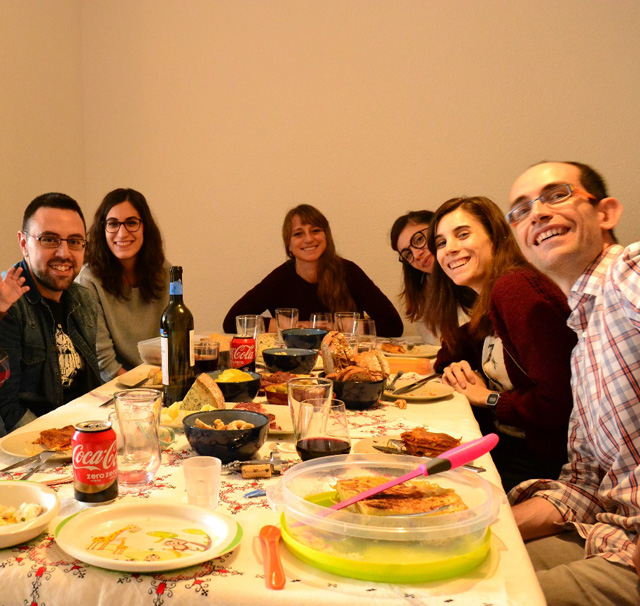
December 2016. Celebrating winter break over good food and drinks.

November 2016. Good friends and mentors Julio Fernández and Carmelu Badilla visited the lab while participating in the VI CNIC Conference “Mechanical Forces in Physiology and Disease”.
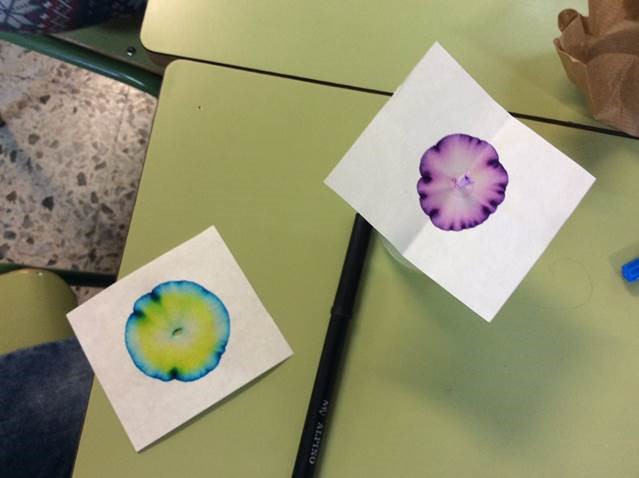
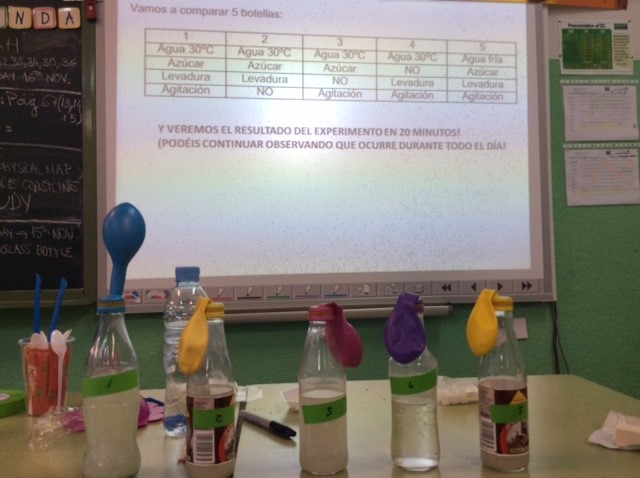
November 2016. We participated in several activities of Madrid’s Science Week.
We saw fermentation in action and chromatography at local school CEIP Tagore.
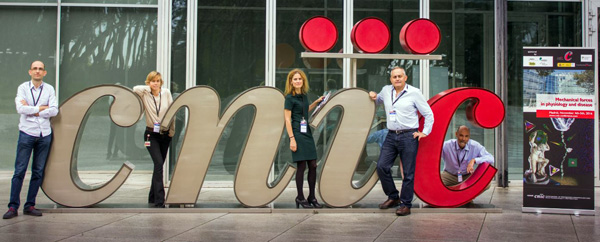
November 2016. The organizers of the VI CNIC conference
“Mechanical Forces in Physiology and Disease”.
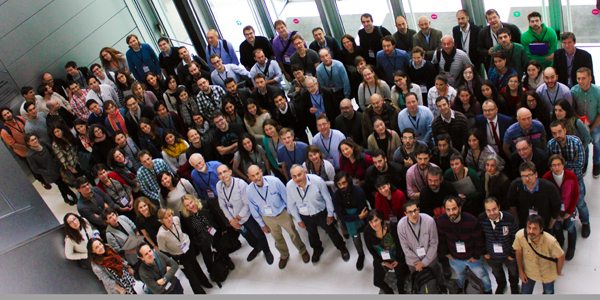
November 2016. Group photo of the VI CNIC conference
“Mechanical Forces in Physiology and Disease”.
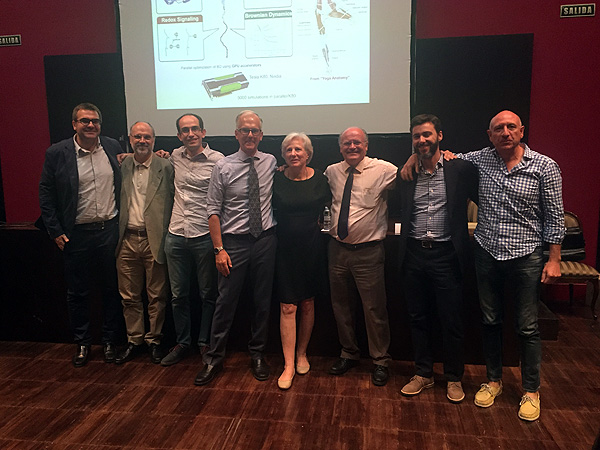
September 2016. Julio Fernández accepts from Carmen Negrín the award “Juan Negrín” from his achievements in the field of single-molecule protein mechanics. A bunch of Julio’s friends met together at the Spanish Physiological Society conference in Zaragoza to celebrate.

July 2016. Lab trip to the natural swimming pools at Cercedilla.

June 2016. International Iberian Biophysics Conference (Porto, Portugal).
Carla receives a travel fellowship from the SBE.

February 2016. Diana on the bench

January 2016. A simple experimental design

December 2015. Celebrating Christmas break

August 2015. Failed strategy to get a decent group photo

April 2015. Jürgen Hollow setting up our Atomic Force Microscope

April 2015. Jorge pretending he’s purifying a protein

April 2015. Diana enjoying the new FPLC

July 2014: Carmen and Elías having second thoughts about whether setting up a lab is a good idea

June 2014. View from Jorge’s office – NY homesick?
Downloads
Research
Career development
Code
Interesting info
If you are interested in Mechanobiology and work in the Madrid area, you may want to join CNIC’s Mechanobiology Seminar Series, which is held at CNIC on a monthly basis attracting scientists from several nearby institutions (UCM, UPM, CNB, IMDEA, CBM). Contact Jorge to join our distribution list.
Outreach
- Article: “Multidisciplinary research for early-career scientists”, published in FEBS Network.
- Article: “Seeing the science glass half full”, published in SBE’s Newsletter (Biofisica.info).
- Article: Who does Science belong to?, published in the website of NIAIA (in Spanish).
- Article: "Moral dilemmas in research", published in the website of NIAIA (in Spanish).
- Article: “On the Biophysical Society Meeting 2017: Eric Betzig super resolves the way to ground-breaking sicence”, published in Biofisica.info.
- Commentary: “Stretch and heal: new elastomer self-heals when damaged” by Carla Huerta-López, published in Biofisica.info.
- Editorial article: “Irreproducibility in Research. What can we do about it?” published in Biofisica.info by the editorial team.
- Commentary: “Engineered heart-tissue via cellular reprograming: A new tool for research and diagnosis” published in Biofisica.info.
- Commentary: “At the heart of the sliding filaments”, published in Biofisica.info.
- Article: “La Medicina y la Biofísica. Conversación con Pedro García Barreno”, in Spanish. Published in Biofisica.info.
- Article: “Jugando en el laboratorio con moléculas únicas”, in Spanish, website of the SEBBM.
- Video: “Cienciando #58: Conociendo a nuestros investigadores ERC: Dr. Jorge Alegre Cebollada”, in Spanish, website of the AEAC.
Appearances in the media
- Back-page interview in El País.
- Interview in the Spanish National Radio (In Spanish) – A Hombros de Gigantes
- Interview in La Razón
Resources
- Expasy Bioinformatics Resource Portal
- Quartzy (lab management)
- How to analyze force-clamp AFM data (includes dataset)
Societies and Organizations
- NIAIA: Training and research in the resolution of moral problems
- Biofisica.info: The newsletter of the Spanish Biophysical Society
- Biophysical Society
- Spanish Society of Biochemistry and Molecular Biology (SEBBM)
- International Foundation For Science
- Spanish Young Academy (AJE)
Journals
- Nature
- Science
- Cell
- PNAS
- Focus in Protein Folding collection in Nanotechnology (co-edited by Jorge)
- Biophysical Reviews (with Jorge as a member of the editorial board).
Miscellaneous
Know More

The heart is a mechanical machine that has little room for failure. Differently to pumps manufactured by men, the heart is built upon soft tissue. What are the mechanical properties of cardiac tissue and its constituent proteins sustaining the remarkable activity of the heart? How is the elasticity of the myocardium tuned to accommodate the expansion of the ventricles during diastole? How do mutations in proteins with a mechanical role trigger the development of life-threatening cardiomyopathies? Since the mechanical properties of proteins are not accessible to standard bulk biochemical techniques, our lab takes a multidisciplinary approach to try to answer all these questions. We specialize in single molecule methods using atomic force microscopy (AFM), which are able to measure the effects of mechanical forces on proteins. We produce our own polyprotein constructs using molecular biology techniques, and are equipped with FPLC instrumentation for high-quality protein purification.
You can find a list of Jorge’s publications here.


Regulation of protein elasticity by redox posttranslational modifications
Using in vitro experiments, we have recently described that posttranslational modification (PTM) of buried cysteines in the giant protein titin makes heart tissue more elastic (Cell 2014, 156:1235). We want to understand how our bodies use this novel mechanism of protein regulation to modulate the mechanical properties of the heart. With that aim, we are taking advantage of the exquisite sensitivity of mass spectrometry techniques to detect redox PTMs in heart tissue. As an independent readout of oxidation, we have also implemented in-gel detection of reduced and oxidized cysteines in titin. Once relevant redox PTMs are identified, we use single-molecule methods by AFM to determine their effect in protein elasticity. We want to explore how these mechanical PTMs are differentially present in heart diseases that alter the mechanics of the myocardium.

Conserved cysteines in the Ig domains of titin
Genotype/phenotype relations in familial cardiomyopathies
Several diseases of the heart involve deleterious changes in the mechanical properties of the myocardium. For instance, in hypertrophic cardiomyopathy the left ventricle has a hard time relaxing, which makes diastole inefficient. On the other side of the coin, in dilated cardiomyopathy the ventricle walls get thinner and the pumping activity of the heart is hampered. Interestingly, the vast majority of familial cardiomyopathies are caused by mutations in sarcomeric genes that code for proteins with mechanical roles. We are exploring the connection between dysregulation of protein mechanics and development of heart disease. Using single-molecule AFM, we measure the mechanical properties of proteins whose mutation cause cardiomyopathy. To have a fuller view on the mechanisms inducing disease phenotypes, we are setting up an extensive network of collaborators, including clinical cardiologists, companies and scientists with complementary expertise, to examine several cellular pathways that may be affected by mutations. This collaborative effort is eased by the translational focus of CNIC, which brings together basic and more-application-oriented scientists and physicians.

Proteins with mechanical roles in the sarcomere.
Development of engineered muscle-mimicking biomaterials
Integrating all we learn about the mechanics of muscle, we are engineering protein-based biomaterials that mimic the tunable elasticity of muscle. Using a directed crosslinking strategy, we are able to polymerize polyproteins into hydrogels whose stiffness can be measured in the lab using tensile testers built by us. Previous results suggest that the unfolding and refolding of the polyprotein domains within the gel are key contributors to the elasticity of the biomaterial (Macromolecular Materials and Engineering, 2015, 300, 369). Following these observations, we are developing experimental platforms that allow us to predict the stiffness of the biomaterial from the mechanical properties of the constituent polyproteins measured at the single-molecule level. This will give us valuable information about how to scale up the mechanical properties of proteins to macromolecular assemblies, let them be biomaterials or muscle fibers. We are also exploring potential translational applications of our biomaterials in tissue regeneration or implantable devices.

Join us
If you are interested in joining the lab, we want to hear about you and your ideas! Send an e-mail to Jorge (jalegre at cnic.es) including your CV and a motivation letter. We always welcome applicants to the different training programs at CNIC, and motivated students with excellent academic record to develop their Degree, Master or PhD Thesis.
Our philosophy of work is set by our main goals as a laboratory. We want our discoveries to be relevant enough to be included in textbooks. We take pleasure in training and mentoring students and postdocs so that they become an improved version of themselves. We support flexible work schedule regarding time-off and holidays, always keeping in mind that we are a team working together. And last but not least, we want to have fun. Our goals are challenging and require hard work – so we better have a good time while achieving them!
For more information about the scientific life in the lab, please check our Philosophy of Work statement that can be downloaded from here.
Personal
Alumni
- Andra Cristina Dumitru. Group Leader at the Louvain Institute Of Biomolecular Science And Technology of Université Catholique de Louvain.
- Carmen Suay Corredera (PhD Thesis, 2022). Postdoctoral Researcher in the
Desarrollado por Fundanet, Semicrol @ 2025 Clarivate Analytics
 Portal de investigación
Portal de investigación
